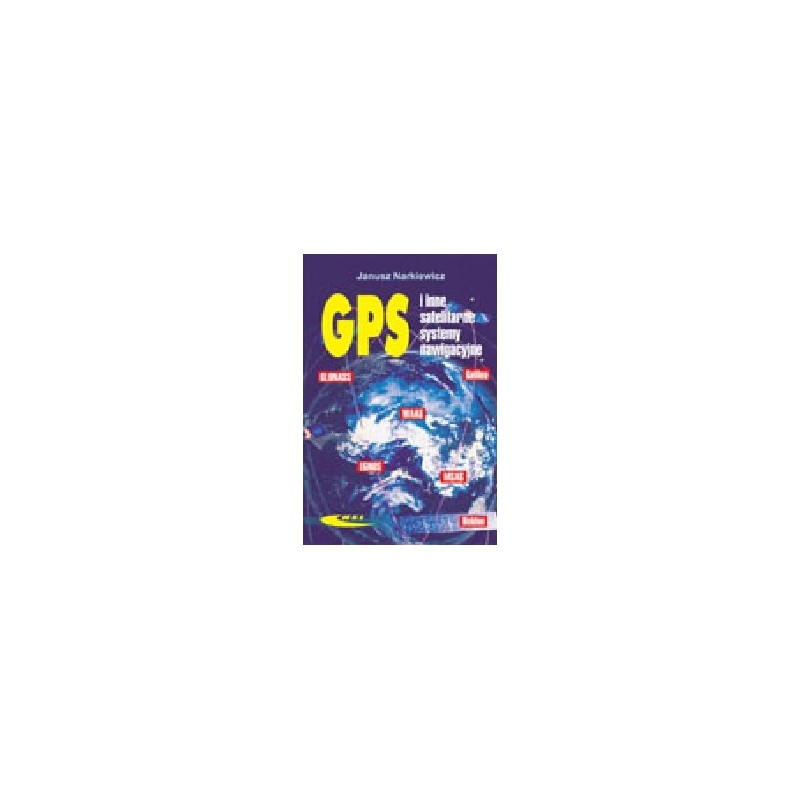- Out-of-Stock



Janusz Narkiewicz
A book devoted to satellite navigation systems: a fully functioning US GPS, an incomplete Russian system GLONASS, a European Galileo system and Chinese Beidou, as well as terrestrial and satellite systems supporting their operation. The structure and principles of operation of individual navigation systems, their accuracy, sources of possible errors, methods of determining position, velocity and position of objects in space, as well as the principle of operation, technical parameters and functional functions of GPS receivers are described. Areas in which GPS and other satellite navigation systems are or can be used are also indicated.
Recipients: users of GPS receivers and those interested in satellite navigation who want to enrich their knowledge about this field with more than just the information contained in the GPS receiver's instruction manual.
Access in electronic version
in the service
Table of Contents:
From the Author 7
1. Basic information 9
2. Global Navigation Satellite System - GNSS 18
3. Structure of satellite navigation systems 20
3.1. The cosmic segment 21
3.2. Ground segment 31
3.3. User segment 35
4. Operation of satellite navigation systems 37
4.1. Coordinates on the map 37
4.2. Determining time position 40
4.3. Scales and time patterns 47
4.4. Bandwidth and transmission channels 51
5. Signals and information from GPS satellites 56
5.1. Modulation of GPS signals 57
5.2. GPS transmission codes 59
5.3. GPS navigation signal 63
6. Time in the GPS 65 system
7. Position, speed and location of objects in space 69
7.1. Code method for determining position 72
7.2. Phase method for determining position 73
7.3. Determining the speed and angle of the road 75
7.4. Difference method (DGPS) 77
7.5. Methods of determining position in navigation and geodesy 80
7.6. Determining the position of objects in space 82
8. Errors of satellite navigation systems 84
8.1. Ionospheric error 87
8.2. Tropospheric error 91
8.3. Multiprocessing error 94
8.4. Relativistic effects 96
8.5. Satellites 'orbits' errors 97
8.6. Satellite clock errors 97
8.7. Mutual satellite setting errors
(DOP position blur) 98
8.8. Estimate the position accuracy in the GPS 101 receiver
8.9. Methods to improve position accuracy 103
9. Support for satellite navigation systems 106
9.1. Monitoring the operation of the satellite navigation system
through the receiver 108
9.2. Ground-based assistance systems 109
9.3. Satellite support systems 115
9.4. Pseudolites 124
9.5. Information systems 125
10. GPS receivers 127
10.1. Operation of the receiver 129
10.2. Technical parameters of receivers 132
10.3. Antennas 136
10.4. Usable functions of receivers 141
11. GPS 144 modernization
12. GLONASS 148
13. Galileo 156
14. Beidou 169
15. Use of GNSS 171
16. You can find information about GNSS in ... 182
Appendices 1. How GPS 183 was created
2. Comparison of parameters of satellite navigation systems 189
Glossary of English terms 191
Literature 203
No product available!
No product available!
No product available!
No product available!
Filament Artillery PLA Black 1kg 1.75mm is a high-quality, versatile filament for 3D printers, ensuring precise and aesthetic prints
No product available!
No product available!
No product available!
No product available!
No product available!
No product available!
Multifunctional car interior lighting system - a self-assembly set
No product available!
LCD 2x8, 58x30mm, FSTN, LED backlight (green), enhanced temperature range, RoHS
No product available!
What is it about marble runs that makes them so compelling? Kids (and adults!) can watch marbles going down a track, passing through various obstacles, for hours on end. Marble runs are fascinating, they grab our attention, and yet they\'re also relaxing. Marble runs and races have become an unexpected YouTube phenomenon, with thousands of videos racking up millions of views. You choose a marble to watch, to cheer for, you wonder which path it will take, you put yourself in the marble\'s place, imagining that you are right there with the glass ball, going on a marvelous, unknown journey, with twists and turns and surprises around every corner. UGears 70156
No product available!
NanoPi R5C minicomputer designed by FriendlyElec. It is equipped with a Rockchip RK3568B2 processor, 4 GB of LPDDR4x RAM and 32 GB eMMC memory. It supports microSD cards and works with operating systems such as FriendlyWrt, Android, Debian. FriendlyELEC NanoPi R5C
No product available!
HK BMS-631 Super Fast Servo 5.0kg / .10sec / 43g (8779)
No product available!
No product available!

Janusz Narkiewicz
